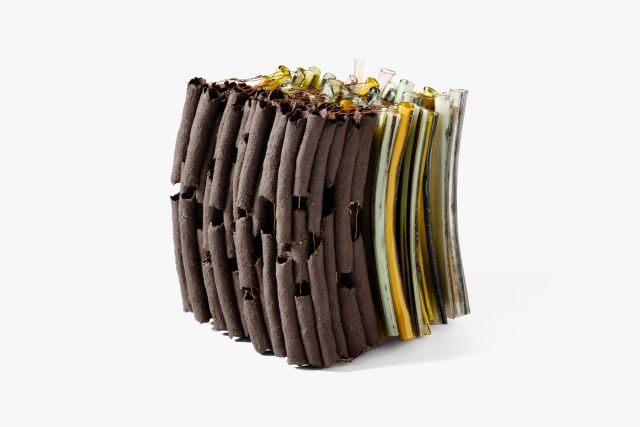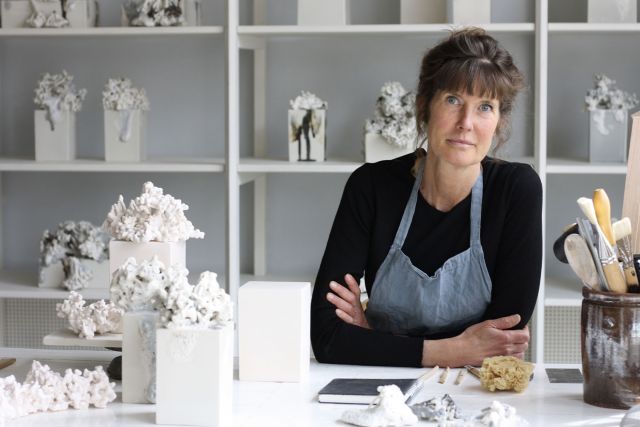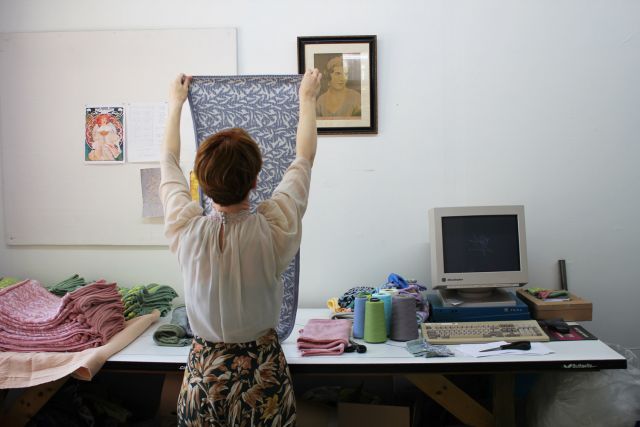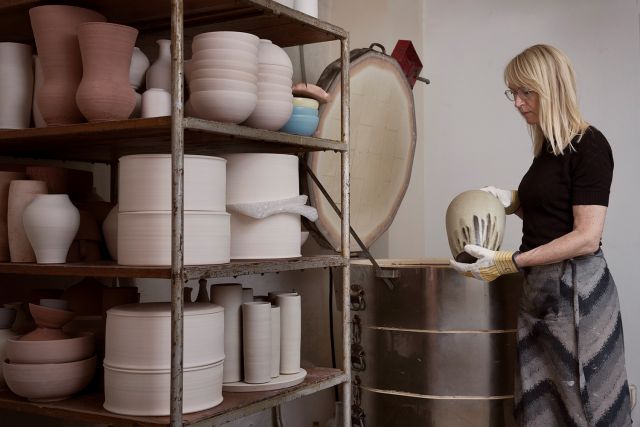This multicoloured rectangular sculpture, which combines stoneware with blown and kiln-formed glass, relates to the duality of life, interpreted through the connection between the materials. It reflects upon how there is always another side to everything, and how this might look and feel, depending on one’s perspective and perception. Ida draws her inspiration from art, architecture, music and literature, seeking the sensory and expressive aspects of works by artists and architects such as Peter Salter, Carlo Scarpa, Egon Schiele and Monika Sosnowska.
 IdaWieth_portrait1.jpg.jpeg)

 IdaWieth_Studio 4.jpg.jpeg)
 IdaWieth_studio_workinprogress 2.jpg.jpeg)
 IdaWieth_Studio 1.jpg.jpeg)
Ida Wieth
- Glass fuser
- Aarhus, Denmark
- Master Artisan
- Recommended by Danish Crafts & Design Association
Monday to Friday 08:00 - 17:00
+45 31571175
Giving glass a sense of mystery
- • Ida works with sculptural glass, pushing the boundaries of traditional glassblowing
- • Her inspirations include Japanese arts and crafts
- • In 2021 she was awarded the Deep Forest Art Land Prize, at Charlottenborg Spring Exhibition in Copenhagen
Ida Wieth discovered glasswork as a child and took her first glass course in Denmark at 18. She went on to study glassblowing at the Kosta Glass School in Sweden, followed by a master’s degree at Edinburgh College of Art in Scotland. “When I first ‘touched’ glass, it was so incredibly difficult but also captivating, and I decided to pursue it further,” she says. Ida now works with glass and ceramics, and occasionally wood, concrete and metals, combining an artistic approach with artisanal knowledge of materials and techniques to create highly expressive and emotional works. For her, creations can be considered well made when feelings, expression and materials come together and trigger a certain sense of mystery.
Read the full interviewWorks
Photo: © All rights reserved

Photo: © All rights reserved
This sculpture was made from blown-glass canes containing metal oxides. The hollow glass tubes were broken up into smaller units, bundled and melted together. The glass side was then connected with a side composed of stoneware. The contrast in texture and colour is highlighted by the tactile sensation arising from the juxtaposition of different materials. Though each side possesses its own qualities and expressions, they remain closely interconnected in a mirroring effect.
32 cm
50 cm
24 cm

Photo: © All rights reserved
The concept for this piece was inspired by things both found and made, and from persistent observations of seeing and valuing things from more than one perspective. The finished sculpture involves constructing and deconstructing, adding and subtracting, bending, turning around and upside down, before bringing all the elements together in a concrete manifestation of the relationship.
31 cm
34 cm
29 cm

Photo: © All rights reserved
These blown and kiln-formed glass sculptures form part of Ida’s Reach collection presented in 2019. In this series she explores the multiple meanings of the word “reach” (reach out, reach far, reach within, etc.) apparent in her process. The sculptures express a sense of movement, giving an impression of elasticity and subtlety. The layered glass tubes were bent around copper wire, the source that defines the final shape.

Photo: © All rights reserved
Reaching out from the frames, creating reflections and double images on the wall, these sculptures of blown and kiln-formed glass shaped around copper wire highlight the parts played by the materials during the crafting process. They illustrate the properties and limitations of glass, question what generates the shapes and expressions, what possibilities arise from the interaction between the materials, making way for an outreaching dialogue between object and viewer in a visual and communicative manner.














